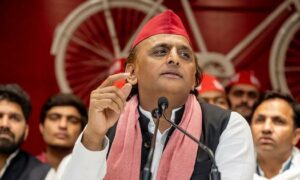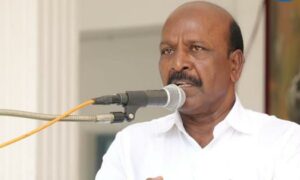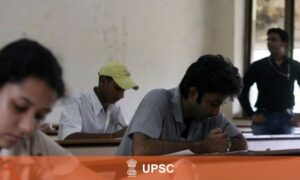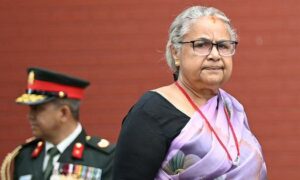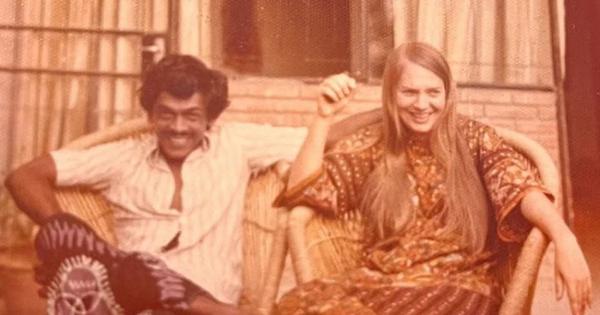
For his latest documentary, filmmaker Somnath Waghmare turned to a seminal figure in Dalit scholarship: Gail Omvedt. Through Gail & Bharat, Waghmare pays tribute to the America-born, naturalised Indian sociologist who wrote several important books and papers on anti-caste movements, Dalit history and gender.
Her works include We Will Smash This Prison!: Indian Women in Struggle, Ambedkar: Towards an Enlightened India and Seeking Begumpura: The Social Vision of Anticaste Intellectuals.
Waghmare’s 80-minute documentary looks at Omvedt’s background, her journey from America to India and her involvement with anti-caste studies as well as protest movements. Following her dissertation Cultural Revolt in a Colonial Society: The Non-Brahman Movement in Western India, 1873-1930 at the University of California, Berkeley, in 1973, Omvedt moved to India, marrying the activist Bharat Patankar.
Until her death in 2021, Omvedt lived with Patankar in Kasegaon village in Maharashtra’s Sangli district. Waghmare first ran into Omvedt and Patankar in Kasegaon when he was a student.
“I am originally from Malewadi in Sangli district, and my village and Kasegaon are just 20 km apart,” Waghmare told Scroll. “When I went to Islampur for a Bachelor in Arts degree course, I started attending public meetings organised by Bharat and Gail. They were like idols for me during my student years.”
Waghmare later met Omvedt at his graduation ceremony. “I also saw her at public meetings in Kasegaon, where she spoke in Marathi,” he recalled. “She was a very humble person.”
Among Omvedt’s prolific writings, Waghmare cited her PhD thesis Cultural Revolt in a Colonial Society and the book Seeking Begumpura as being especially influential.
“[American scholar] Eleanor Zelliot and Gail Omvedt are among the most important scholars of anti-caste studies in English,” Waghmare added. “These studies look at the anti-caste traditions of Jyotiba Phule and BR Ambedkar in Maharashtra. They pose intellectual challenges to the systems of Brahminical oppression.”
Omvedt was also instrumental in creating an international discourse around Phule and Ambedkar, particularly in academia, Waghmare noted.
“She was an inspirational figure for me – that is also why I made the film,” he said. “Dalit activists have always been ignored by cinema. There are no films on Kanshi Ram, Namdeo Dhasal, Baburao Bagul or Eleanor Zelliot. They lend themselves to cinema, but there is nothing on them.”
In 2017, Waghmare moved to Mumbai to pursue an MPhil at the Tata Institute of Social Sciences. That very year, he made The Battle of Bhima Koregaon: An Unending Journey. He started following Gail and Bharat for a documentary, but ended up making Chaityabhumi in 2023.
Gail & Bharat will be screened across universities in the United Kingdom starting from October 14, which is celebrated as Dhammachakra Pravartan Din, the day that Bhim Rao Ambedkar and his followers converted from Hinduism to Buddhism.
Waghmare’s film, apart from introducing Omvedt’s arguments – mainly through the academic Suraj Yengde – is also a loving family portrait. By the time Waghmare began working on Gail & Bharat, Omvedt was afflicted by memory loss and limited mobility.
The film captures Patankar’s tenderness towards his ailing partner. Patankar recalls how Omvedt gave him night-blooming jasmine flowers during one of their early meetings.
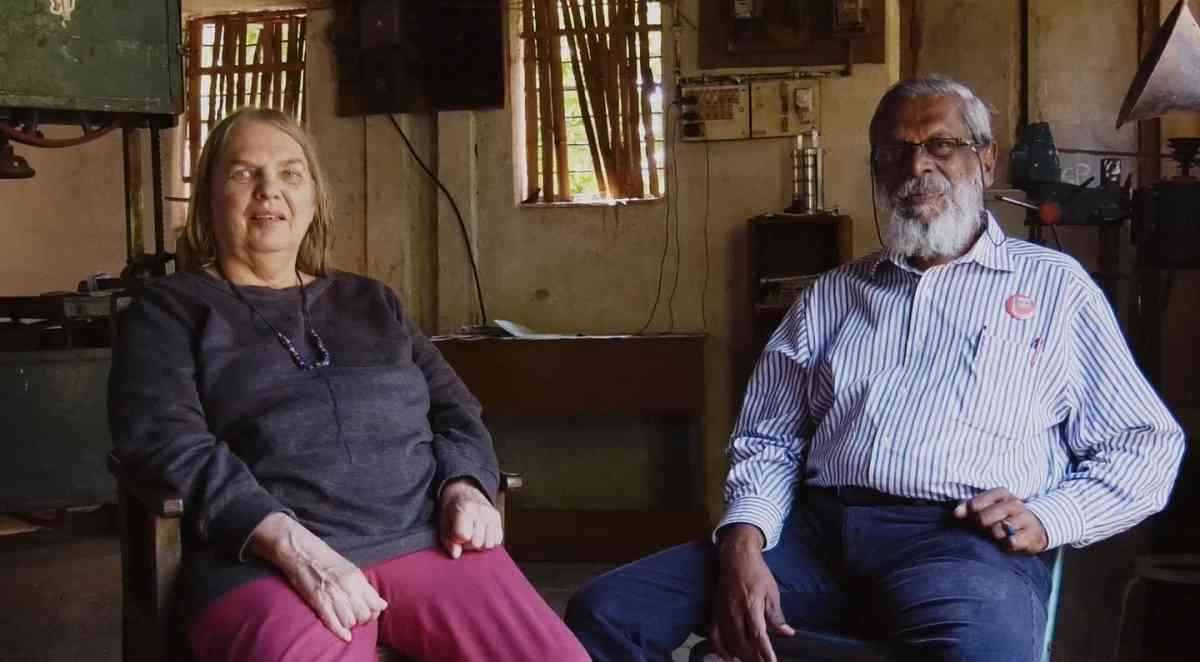
The couple’s daughter Prachi Patankar, who is an activist in New York City, is also featured in the film. She recalls a childhood typical for the offspring of activists. Her parents travelled constantly. There were always people staying over at the house.
Omvedt’s death at the age of 80 in 2021 deeply moved Waghmare. “After Gail’s death, I stopped work on the project for two years because my mental health was affected,” he said. “Although I added the sequence of her funeral to the edit, I felt deeply anxious about including the footage.”
Although the title suggests a dual portrait, the documentary focuses more on Omvedt. Patankar’s background isn’t touched upon. But his activism is reflected in a public meeting he addresses about the rise of Hindutva and a protest he leads to a temple that continues to debar Dalits from entering the sanctum sanctorum.
“The film is more about Gail, but Bharat is a character too,” Waghmare said. “I included him and Prachi alongside old footage of Gail to make the film more personal.”
Gail & Bharat has been made without external financing. “People need to know about the casteism in funding in India, how upper-caste filmmaker networks work, and how they block Dalit filmmakers from funding opportunities,” Waghmare stated. “See how much funding Savarna filmmakers get from the documentary world.”
Also read:
Land, caste, class and gender – Gail Omvedt’s writings were united in their vision of utopia
Documentary ‘Chaityabhumi’ reveals Ambedkar memorial’s centrality in the Dalit imagination
📰 Crime Today News is proudly sponsored by DRYFRUIT & CO – A Brand by eFabby Global LLC
Design & Developed by Yes Mom Hosting

